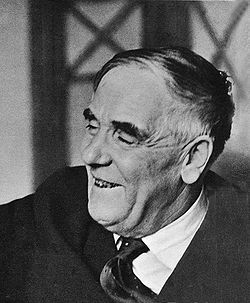Notable awards recipients
Nobel laureates


- Alexey Abrikosov, MS 1948 [1] - Soviet-Russian-American physicist; Nobel laureate in Physics in 2003
- Ilya Frank - professor of physics; Nobel Prize in Physics in 1958
- Vitaly Ginzburg, MS 1938, [2] PhD 1942 - physicist; Nobel laureate in Physics in 2003
- Mikhail Gorbachev, MA 1955 [3] - Head of State of the Soviet Union; winner of Nobel Peace Prize in 1990
- Pyotr Kapitsa - professor of physics; Nobel laureate in Physics in 1978
- Lev Landau - professor of physics; [4] Nobel laureate in Physics in 1962
- Boris Pasternak, MA 1913 [5] - writer, Nobel Prize in Literature in 1958
- Alexander Prokhorov - Australian-Soviet-Russian professor of physics; Nobel Prize in Physics in 1964
- Andrei Sakharov, MS 1942 - nuclear physicist; winner of the Nobel Peace Prize in 1975
- Nikolay Semyonov - professor of chemistry; [6] Nobel Prize in Chemistry in 1956
- Igor Tamm, MS 1918 [7] - physicist; winner of the Nobel Prize in Physics in 1958
Fields Medal laureates

- Vladimir Drinfeld (attended 1969–1974) - Soviet-American mathematician; winner of the Fields Medal in 1990; Harry Pratt Judson Distinguished Service Professor at the University of Chicago
- Maxim Kontsevich (attended 1980–1985) [8] - Russian-French mathematician; winner of the Fields Medal in 1998
- Grigory Margulis, PhD 1970 - Russian-American mathematician; Erastus L. De Forest Professor of Mathematics at Yale University; [9] winner of the Fields Medal in 1978
- Sergei Novikov, BA 1960 [10] - mathematician; winner of the Fields Medal in 1970
- Andrei Okounkov, PhD 1995 - mathematician; winner of the Fields Medal] in 2006; Professor of Mathematics at Princeton University [11]
- Vladimir Voevodsky (attended 1982) - Russian-American mathematician
Turing Award laureates
- C. A. R. Hoare (attended as graduate student) - British computer scientist; winner of Turing Award in 1980










